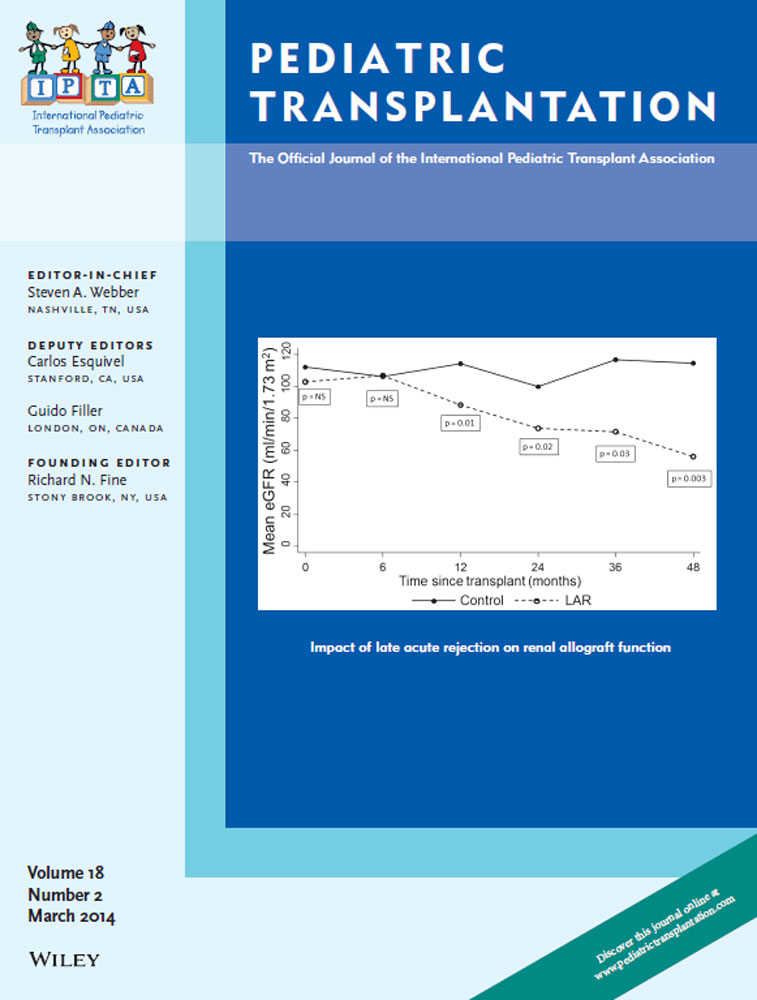Low plasma levels of antithrombin III in the early post-operative period following pediatric liver transplantation: Should they be replaced? A single-center pilot study
Abstract
eHAT after LT remains a life-threatening complication. In the majority of anticoagulation protocols, heparin is used to prevent thromboses. Our study aimed to monitor AT-III levels in the early post-LT period to assess the need for the administration of AT-III concentrate to ensure the effectiveness of heparin. We monitored coagulation daily by measuring INR, APTT, fibrinogen, platelets, and AT-III. Anticoagulation therapy consisted of LMWH, AT-III, and dipyridamole. AT-III concentrate was administered when AT-III activity was ≤60%. DUS was performed daily for the first five post-operative days or whenever vascular thrombosis was suspected. Between October 2007 and October 2011, 39 LT were performed in our center. The median age was 26 months (6–196) with a median weight of 9 kg (5.5–49). AT-III activity was ≤60% in 27 patients. Lower levels were particularly observed in partial grafts and recipients weighing less than 10 kg. Patent arterial flow was present in all 39 LT during the first five post-operative days. AT-III levels were low in 70% of pediatric patients following LT, thereby risking heparin ineffectiveness. These results may implicate low AT-III levels in the etiology of eHAT post-LT. However, this is a small single-center pilot study and further larger prospective trials are required to confirm these results.




